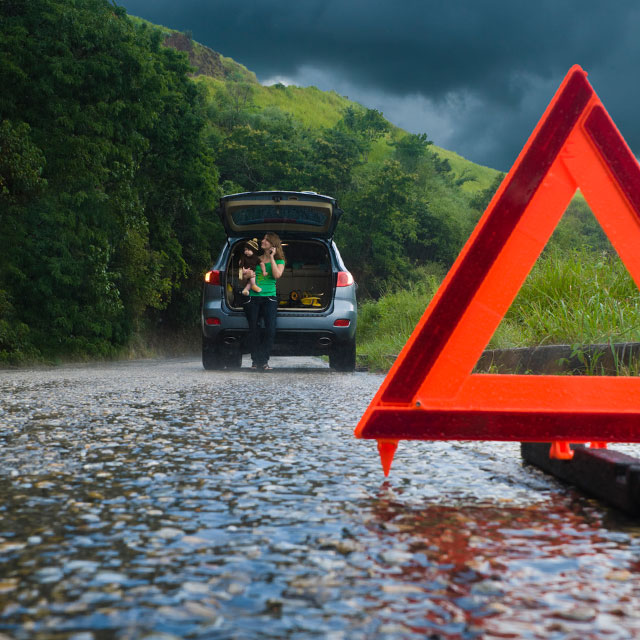


Whether you drive every day or just for infrequent road trips, you always want to be safe behind the wheel. And to be safe, you need to be prepared…even for the most unlikely events.
What do you do if you’re driving when a flood, tornado, or severe thunderstorm hits? What about swerving or losing control of the vehicle? Breaking down in a remote location? And—yes, it’s a movie cliché—but what if you drive off the road into a body of water?
These survival scenarios might be more extreme than most people are likely to face, but they’re still helpful to understand. Take this quick guide as your introductory prep (and check resources like the National Highway Traffic Safety Administration for more comprehensive answers).
This basic rule applies to all driving situations, THINK BEFORE YOU ACT.
Your vehicle skids when the tires lose grip on the road surface. If your vehicle starts to skid follow these safety tips
While driving on a highway, you might have seen signs indicating soft shoulder. These signs are not very common and may drivers are unaware of what a soft shoulder is. A shoulder or hard shoulder is a lane that can be used as an emergency stopping lane, usually on the right side of the road. They are as strong as regular roads and constructed in the same way. Soft shoulder, however, is not the same as shoulder. They might be made of weaker material than the road you are on. Some of them might be made of gravel, compressed dirt or combination of other materials. This make soft shoulder provide lower traction than ordinary roads. Vehicles need solid dry surface for the driver to be in control. Soft shoulders, like roads that are wet or have ice build up offer little to no traction and therefore are not safe to drive on. Another problem with soft shoulder is that they might be lower than the road they are next to. Therefore if your vehicle drifts into a soft shoulder, it would be suspended on two unlevel surfaces.
If your vehicle drifts into a soft shoulder on the right side of the road, it is important that you remain calm and do the following:
Again if your vehicle goes into a ditch do not panic. It should not be a major incident if you drive down a ditch as long as you do not crash into coming road or an obstacle. If you try to aggressively turn that may lead to a rollover. Instead you should do the following